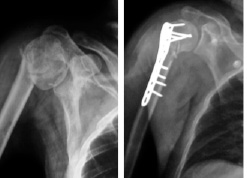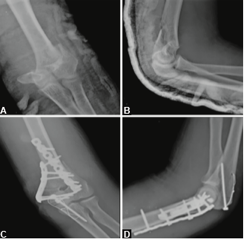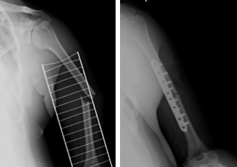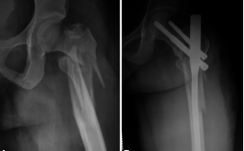Know Your Bones
The human skeleton is made up of 206 bones. It is divided into axial (80 bones) and appendicular (126 bones) parts. Axial skeleton consists of the skull, vertebral column and thoracic cage. Appendicular skeleton consists of bones of the limbs. Bony skeletal provides attachment to muscles and tendons and support the body and protect the body organs.
Bones are made up of bone cells, proteins and minerals. Three types of bone cells are: (1) osteoblast, which form bone (2) osteoclast which reabsorbs bone and (3) osteocytes. Main minerals of bones are calcium and phosphorus. 80% of bone proteins are type I collagen.
How Bones Fracture:
A fracture is a break in the continuity of bone. Dislocation refers to loss of contact of two joint surfaces. Shoulder joint is most common joint to dislocate in adults; however elbow joint is most commonly dislocated joint in children. Road traffic accidents and fall from height are two most common causes for fracture of bones/dislocation of a joint.
"Stress fracture" are different from normal fractures and they result when a normal bone is subjected to excessive or abnormal stress like after unaccustomed exercises, Sudden increase in duration/intensity/frequency of training. excessive running etc. Patient with stress fracture complain of activity related lower limb pain and these are common in dancers, runners, jumpers and military recruits. The most common sites include distal leg and foot. Stress fractures may not be seen on x rays and CT scan or MRI may be required to clinch the diagnosis. Stress fracture unite rapidly with rest in plaster cast only.
Pain/tenderness, swelling, and abnormal mobility are classical signs after a fracture. An x ray is all that is required to make the diagnosis in most of the cases. Displaced fractures may present with deformity at fracture site. Patient can't use a fractured limb so on a fractured leg bone one cannot bear weight likewise one may not grip without pain with fractured finger bones. All fractures require reduction and immobilization either in plaster cast or by surgical means.
Injury to soft tissues (muscles, ligaments) surrounding bones:
Muscles are attached to bones by tendons. Injury to a muscle is referred to as a "strain" while injury to ligaments is called as "sprain". Sometimes force of injury is not that great to break the bone but it can injure the surrounding soft tissues like muscles, tendons and ligament. In case of muscle and ligament injury you are still bear weight or use the limb but with more or less pain. Initial treatment of soft tissue (muscles, ligaments) injury is frequent application of ice (every two hour for twenty minutes) and relative rest to the part. Further treatment depends on the severity (partial or complete injury) of injury and you should consult a doctor

Four part arm bone fracture fixed with plate

Elbow fracture and fixation

Arm bone fracture Fixation with plate

Hip bone fracture and fixation with nail.
ABOUT THE AUTHOR

TESTIMONIAL

मेरा दाए पैर में चोट लगने के कारण टेढ़ा हो गया था जिसकी वजह से मुझे चलने में भी परेशानी हो रही थी. डॉ जितेश ने ऑपरेशन कर के इसे सीधा किया. में बिलकुल ठीक हूँ .

मेरी बेटी के घुटने में इन्फेक्शन होने के कारण वो दर्द की वजह से सो भी नहीं पाती थी. डॉ जितेश ने ऑपरेशन कर के इसे ठीक किया. बहुत धन्यवाद।

remember that Dr. Jain came out from his clinic to see my mother because my mother was not able walk a single step. He did total knee replacement on both side and now my mother is walking without aid.
OPENING HOURS
| Monday – Friday | 16:00 – 20:00 |
| Sunday | OFF |
